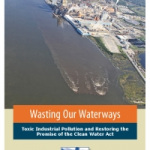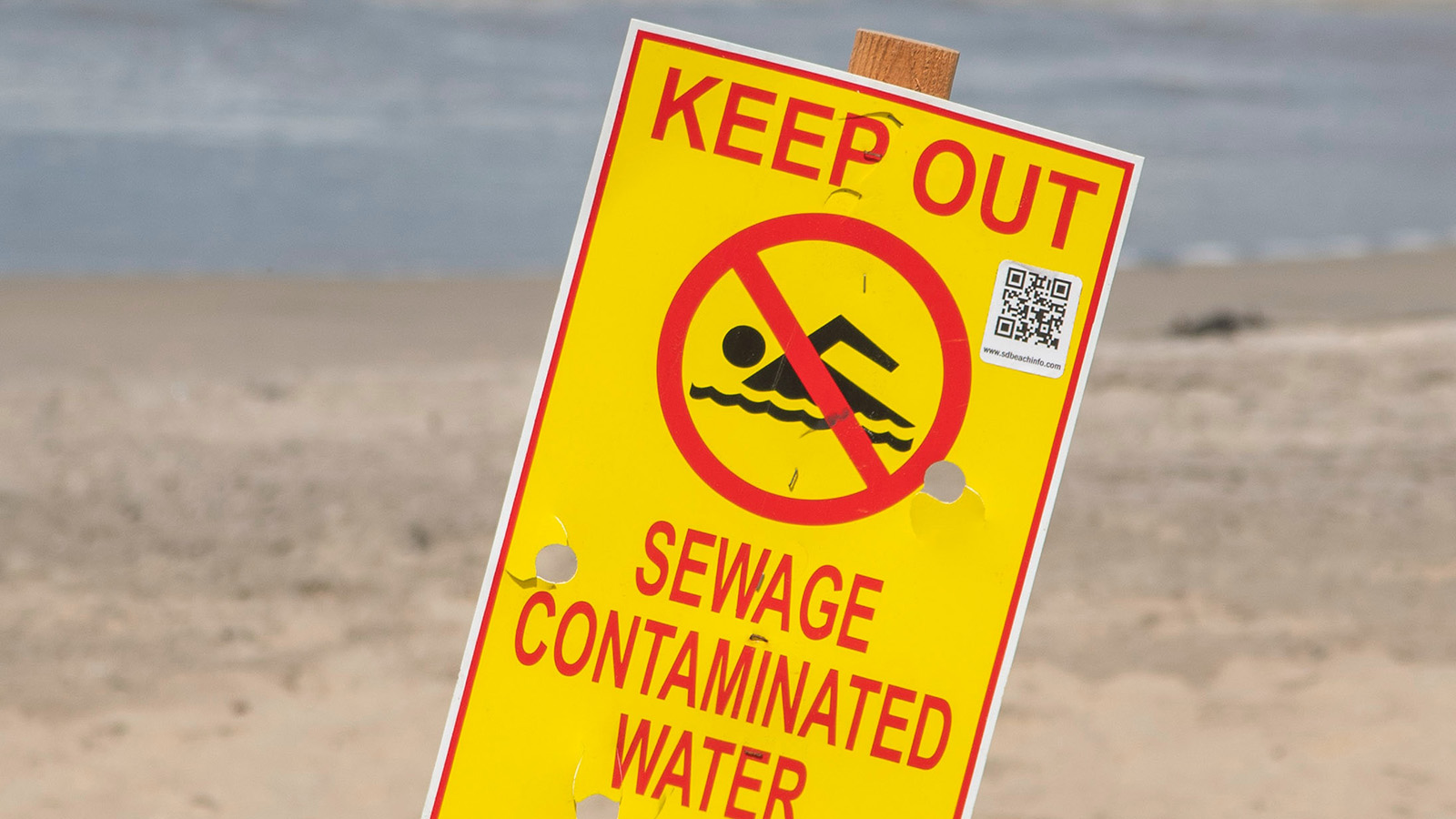
Wasting our Waterways
Toxic Industrial Pollution and Restoring the Promise of the Clean Water Act
Industrial facilities continue to dump millions of pounds of toxic chemicals into America’s rivers, streams, lakes and ocean waters each year – threatening both the environment and human health. According to the U.S. Environmental Protection Agency (EPA), toxic discharges from industrial facilities are responsible for polluting more than 17,000 miles of rivers and about 210,000 acres of lakes, ponds and estuaries nationwide.
Downloads
Environment Georgia Research & Policy Center

Executive Summary
Industrial facilities continue to dump millions of pounds of toxic chemicals into America’s rivers, streams, lakes and ocean waters each year – threatening both the environment and human health. According to the U.S. Environmental Protection Agency (EPA), toxic discharges from industrial facilities are responsible for polluting more than 17,000 miles of rivers and about 210,000 acres of lakes, ponds and estuaries nationwide.
To curb this massive release of toxic chemicals into our nation’s water, we must step up Clean Water Act protections for our waterways and require polluters to reduce their use of toxic chemicals.
Industrial facilities dumped 206 million pounds of toxic chemicals into American waterways in 2012, according to reports from those facilities to the national Toxics Release Inventory (TRI). (See Table ES-1 and Figure ES-1.)
- Our nation’s iconic waterways are still threatened by toxic pollution – with polluters discharging chemicals into the following watersheds: Great Lakes (8.39 million pounds), Chesapeake Bay (3.23 million pounds), Upper Mississippi River (16.9 million pounds), and Puget Sound (578,000 pounds), among other national treasures. (See Figure ES-2.)
- Polluters released toxic chemicals to 850 local watersheds across the country. Indiana led the nation in total volume of toxic releases to waterways, with more than 17 million pounds of discharges from industrial facilities, followed by Texas and Louisiana. The top 10 states for toxic industrial releases to waterways were the same as in 2010. (See Table ES-2.)
- Watersheds receiving the highest volumes of toxic pollution were the Lower Ohio River-Little Pigeon River (Indiana, Illinois and Kentucky), the Upper New River (Virginia) and the Middle Savannah River (Georgia and South Carolina). (See Table ES-3.)
Table ES-1. Industrial Toxic Releases by Watershed Region
Watershed Region
Total Pounds Released
Toxicity Weighted Pounds
Texas-Gulf
13,211,652
33,935,900
South Atlantic-Gulf
37,715,213
4,472,145
Lower Mississippi River
13,933,267
3,473,041
Pacific Northwest
6,472,813
1,292,540
Great Basin
1,275,484
1,070,625
Tennessee River
6,261,817
874,903
Arkansas-White-Red Rivers
13,005,273
611,570
Ohio River
43,103,836
496,583
Great Lakes
8,402,059
220,180
Souris-Red-Rainy Rivers
138,939
186,473
Upper Mississippi River
16,863,867
159,216
Mid Atlantic
23,690,915
131,270
Missouri River
14,878,771
105,362
Hawaii
435,662
40,131
New England
3,336,235
34,402
California
2,358,874
33,280
Upper Colorado River
22,143
2,038
Alaska
570,475
1,958
Lower Colorado River
3,632
1,906
Rio Grande River
35,857
333
[BEGIN TABLE NOTE]
Several of these watershed regions contain multiple outlets to the ocean. Toxics released in these areas do not all follow the same path to the sea.
[END TABLE NOTE]
Figure ES-1. Industrial Discharges of Toxic Chemicals to Waterways by Watershed Region
Table ES-2. Top 10 States for Toxic Releases to Water in 2012
State
Total Releases (lbs.)
Indiana
17,761,310
Texas
16,476,093
Louisiana
12,618,616
Alabama
12,287,252
Virginia
11,821,961
Nebraska
10,506,483
Pennsylvania
10,470,231
Georgia
10,132,268
North Carolina
8,897,062
Ohio
7,567,720
Figure ES-2. Industrial Discharges of Toxic Chemicals to Nationally Iconic Watersheds
Toxic chemicals linked to serious health effects were released in large amounts to America’s waterways in 2012.
- Cancer: Industrial facilities released more than 1.4 million pounds of chemicals linked to cancer into 688 local watersheds during 2012, including arsenic, benzene and chromium. The North Fork Humboldt River watershed in Nevada received the largest release of carcinogens among local watersheds, followed by the Lake Maurepas watershed in Louisiana.
- Developmental damage: More than 460,000 pounds of chemicals linked to developmental disorders were released into more than 600 local watersheds. Nevada’s North Fork Humboldt River watershed suffered the most developmental toxicant releases among local watersheds, followed by the Lake Maurepas watershed in Louisiana.
- Fertility problems: Approximately 4.4 million pounds of fertility-reducing chemicals were released to more than 600 local watersheds. The Lower Chehalis River watershed in northwestern Washington, which flows into a bay surrounded by wildlife refuges, state parks and beaches, received the second-highest volume of reproductive-toxic releases in the nation.
- Discharges of persistent bioaccumulative toxics (including dioxin and mercury) are also widespread.
Industrial facilities – especially those operated by corporate agribusiness – continue to release high volumes of nitrates into America’s waters.
- Nitrate compounds – which can cause serious health problems in infants if found in drinking water and which contribute to oxygen-depleted “dead zones” in waterways – were by far the largest releases of toxic chemicals in terms of overall weight.
- Corporate agribusiness facilities – such as slaughterhouses and poultry plants – were responsible for approximately one-third of all direct discharges of nitrates to waterways. This is in addition to huge volumes of runoff pollution from factory farms and other agribusiness operations.
- Toxic releases continued in already damaged waterways. For example, Tankersley Creek in northeast Texas has long been the target of state and federal cleanup efforts, but a 30-year-old chicken-processing plant released four times more nitrates into Tankersley Creek in 2012 than it had in 2000.
Table ES-3. Top 10 Local Watersheds Receiving Toxic Releases, Total Pounds.
Local Watershed
Total Releases (lbs.)
Lower Ohio-Little Pigeon Rivers (IN, IL, KY)
14,727,205
Upper New River (NC, VA)
7,338,166
Middle Savannah River (GA, SC)
5,025,161
Muskingum River (OH)
4,414,602
Blackbird-Soldier Rivers (IA, NE)
4,372,706
Lower Platte-Shell Rivers (NE)
3,726,866
Buffalo River-San Jacinto (TX)
3,557,254
Brandywine Creek-Christina River (DE, PA)
3,416,615
Middle Ohio-Laughery River (IN, OH)
3,328,548
Lower Des Moines River (IA)
2,902,489
Toxic chemicals vary in the severity of the threat they post to the environment and human health. When weighted by toxicity of releases, the watersheds receiving the most toxic discharges were the Lower Brazos River (Texas), the Lower Grand River (Louisiana), and the North Fork Humboldt River (Nevada). (See Table ES-4.)
Table ES-4. Top 10 Local Watersheds Receiving Toxic Releases, Toxicity-Weighted Pounds Equivalent
Local Watershed
Toxicity Weighted Pounds Equivalent Released
Lower Brazos River (TX)
33,474,792
Lower Grand River (LA)
1,926,751
North Fork Humboldt River (NV)
1,042,622
Nooksack River (WA)
1,028,364
Noxubee River (AL, MS)
593,695
Lower Cape Fear River (NC)
550,152
Lower Sulphur River (AR, TX)
508,181
Lower Tennessee River (KY)
474,284
Bayou Sara-Thompson Creek (LA)
341,414
Middle Pearl-Silver Rivers (MS)
328,186
To protect the public and the environment from toxic releases, the United States should prevent pollution by requiring industries to reduce their use of toxic chemicals and restore and strengthen Clean Water Act protections for all of America’s waterways.
The United States should restore Clean Water Act protections to all of America’s waterways and strengthen enforcement and permitting under the Clean Water Act.
- Specifically, the Obama administration should finalize its proposed rule clarifying that the Clean Water Act applies to headwater streams, intermittent waterways, isolated wetlands and other waterways.
State and federal policies should move industrial polluters away from the use of toxic chemicals, in favor of safer alternatives. Specifically, state and federal officials should:
- Require the use of safer alternatives to toxic chemicals, where such alternatives already exist.
- Phase out the worst toxic chemicals.
The data in this report do not cover the entire volume of toxic chemicals released to the environment – just the ones released to surface waterways by industrial facilities that report to the U.S. EPA’s Toxics Release Inventory. To expand understanding of toxic releases, policymakers should:
- Close loopholes that allow major polluters to avoid reporting their toxic releases. For example, the oil and gas industry should be required to report releases of fracking fluid and drilling waste to the Toxics Release Inventory.
- Ensure the public is informed about the storage of toxic chemicals, especially in light of the toxic spill that contaminated drinking water for 300,000 people in West Virginia in January 2014.
Topics
Find Out More


Clean Water Act on Trial

Safe for Swimming?

